Cultivation table for the urban garden at home. Types of cultivation tables
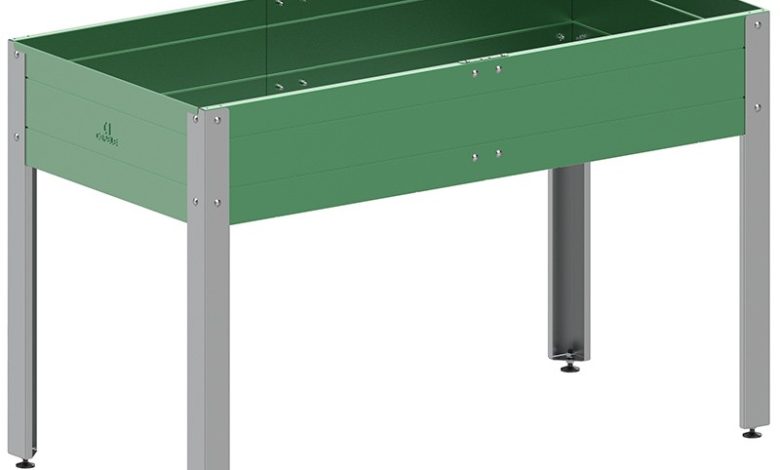
In this post we will see some ideas to make a garden on cultivation tables. The cultivation table is one of the most used containers in the urban garden due, among other advantages, to its cleanliness, comfort and easy installation.
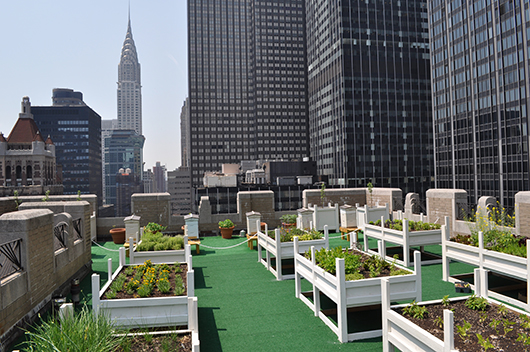
Although today we will not focus on them, there are also other types of cultivation containers for the urban garden that we can combine with the cultivation table, such as planters, hanging pots, geotextile bags or modules for vertical gardens.
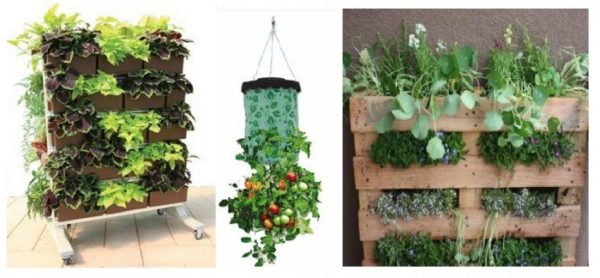
Advantages of growing tables
The cultivation tables are undoubtedly one of the most comfortable solutions for cultivating an urban garden. These types of containers raise the cultivation surface to a much more comfortable working height, so we will not have to bend down to the ground to plant, fertilize, water or harvest the crop.
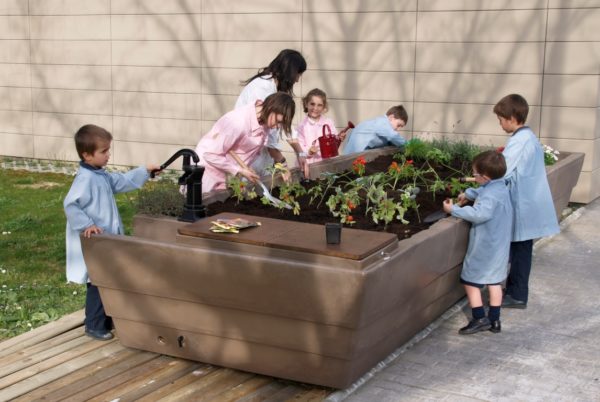
There are cultivation tables of different sizes and heights: to work with children, with disabled people in wheelchairs, etc.
In addition, many cultivation tables have wheels, which facilitates their transport and makes the urban garden more versatile.
Types of cultivation tables for urban gardens
The cultivation table for the urban garden can be made of wood, plastic or even some metallic material. The latter are not recommended for rooftops or gardens in hot areas with many hours of direct sunlight, since they may get too hot and the rise in temperature of the substrate negatively affects the plants.

Depending on the plants to be cultivated in the urban garden, we must choose one type or another of cultivation table. The depth and size of the urban garden table depends on the crops chosen. For example, if we are going to make a garden with aromatic herbs, leafy vegetables such as lettuce or spinach, strawberries or other plants with a shallow root system, a cultivation table about 15 or 20 cm deep will suffice, like the one shown here. seen in the image above on the right.
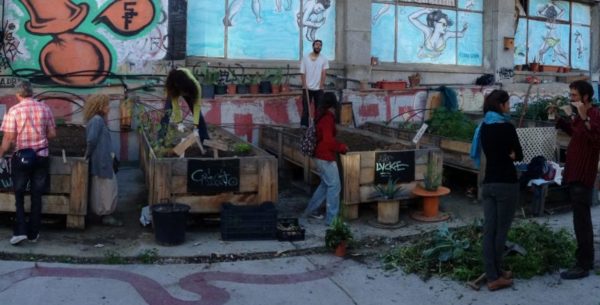
If, on the other hand, we are going to grow solanaceous plants such as tomatoes, tubers and roots such as potatoes or carrots, or cucurbits such as squash and watermelon, the depth of the cultivation table must be greater: from 30 to 70 cm, depending on the plant. In that case, it would be necessary to install deep cultivation tables like the ones in the photo above.

The cultivation tables with shelves are very functional, since they provide us with a place to place the tools or the harvest while we work in the garden. We can also find mini-greenhouse tables on the market, with a plastic cover to protect the crops, and all kinds of designs, sizes and colors for the mini-garden tables at home.

There are many designs of growing tables, so the best we can do is search well until we find the most suitable for our plants and for the available space. Another possibility is to recycle an old table or build a homemade grow table (we’ll see how later).
planting table
There are many types of garden plants for which it is convenient to make seedbeds before planting in the final plot.

Planting tables can be a good place to house seedbeds, especially if you are going to make a large garden, for which you will need to prepare several dozen of them.
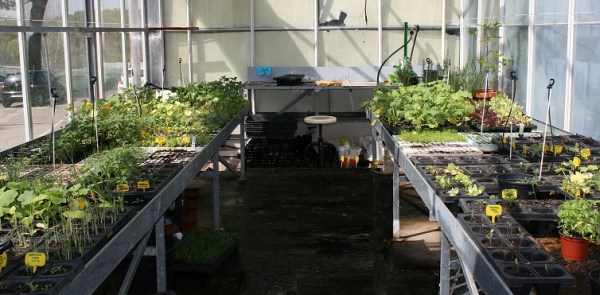
With the seedbeds on the cultivation tables it will be much easier to monitor the small seedlings. In addition, watering the seedlings will also be much more comfortable than if we have to bend down or move the seedbeds from one place to another for watering.
hydroponic table
Hydroponics and hydroponic crops are some of the latest developments in the field of intensive cultivation. This technique consists of replacing a nutritious substrate with a solution of water and nutrients, on which the plants grow.

Hydroponic tables may be the future of urban gardens. At the moment, in this school garden that we visited in Beijing (China) they already had several tables.
How to make a homemade grow table
With a little skill, nails, a hammer and several wooden boards in good condition, we can make a cultivation table for the urban garden.

FAO, 2003
We can also reuse an old table that we are going to throw away to make a recycled cultivation table for the urban garden.

Irrigation for cultivation tables
If you have a mini garden at home, it may not be worth installing any irrigation system and you can opt for manual irrigation with a watering can or a hose. In that case, for short vacation periods or weekends away from home, you can install a home irrigation system for vacations.
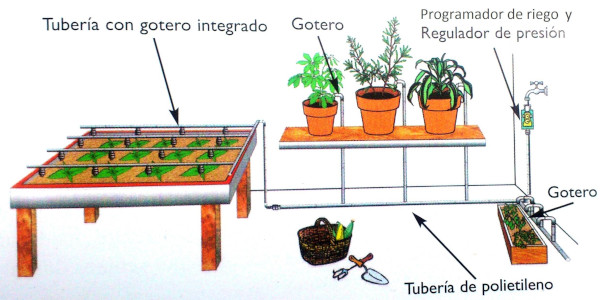
If the orchard is larger and you prefer automatic irrigation to be able to stop worrying about this task, the best options for irrigation of cultivation tables are the drip irrigation system and the exuding tape irrigation.
It’s easy to find a tabletop irrigation kit at any physical garden store or online. These irrigation packs for cultivation tables must be composed of the drip or exudation tubes, the pressure regulator and an irrigation programmer to install in the water intake or tap, as well as elbows and keys to mount the irrigation installation according to our specific needs and the available space.
References
- Stephens, JM, 1994. Minigardening (Growing Vegetables in Containers). IFAS Extension (HS708). University of Florida (USA).
- FAO, 2003. Technical Manual: The Popular Hydroponic Garden. FAO Regional Office for Latin America and the Caribbean
- Vallés, 2009. The urban garden. Organic cultivation manual on balconies and terraces. Ediciones del Serbal SL ISBN: 9788476285695.
- GRAMA Association, 2012. Garden Manual. Action Group for the environment (Spain).
- Madrid City Council, 2017. Ecological Urban Garden Course


![Photo of Grow Plants: How to Cultivate and Grow Any Plant in [13 Steps]](https://www.complete-gardening.com/wp-content/uploads/2022/08/grow-plants-how-to-cultivate-and-grow-any-plant-in-13-steps-390x220.jpg)
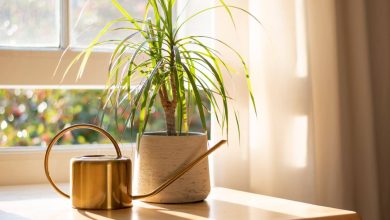
![Photo of Weevil: [Characteristics, Detection, Effects and Treatment]](https://www.complete-gardening.com/wp-content/uploads/2022/08/weevil-characteristics-detection-effects-and-treatment-390x220.jpg)